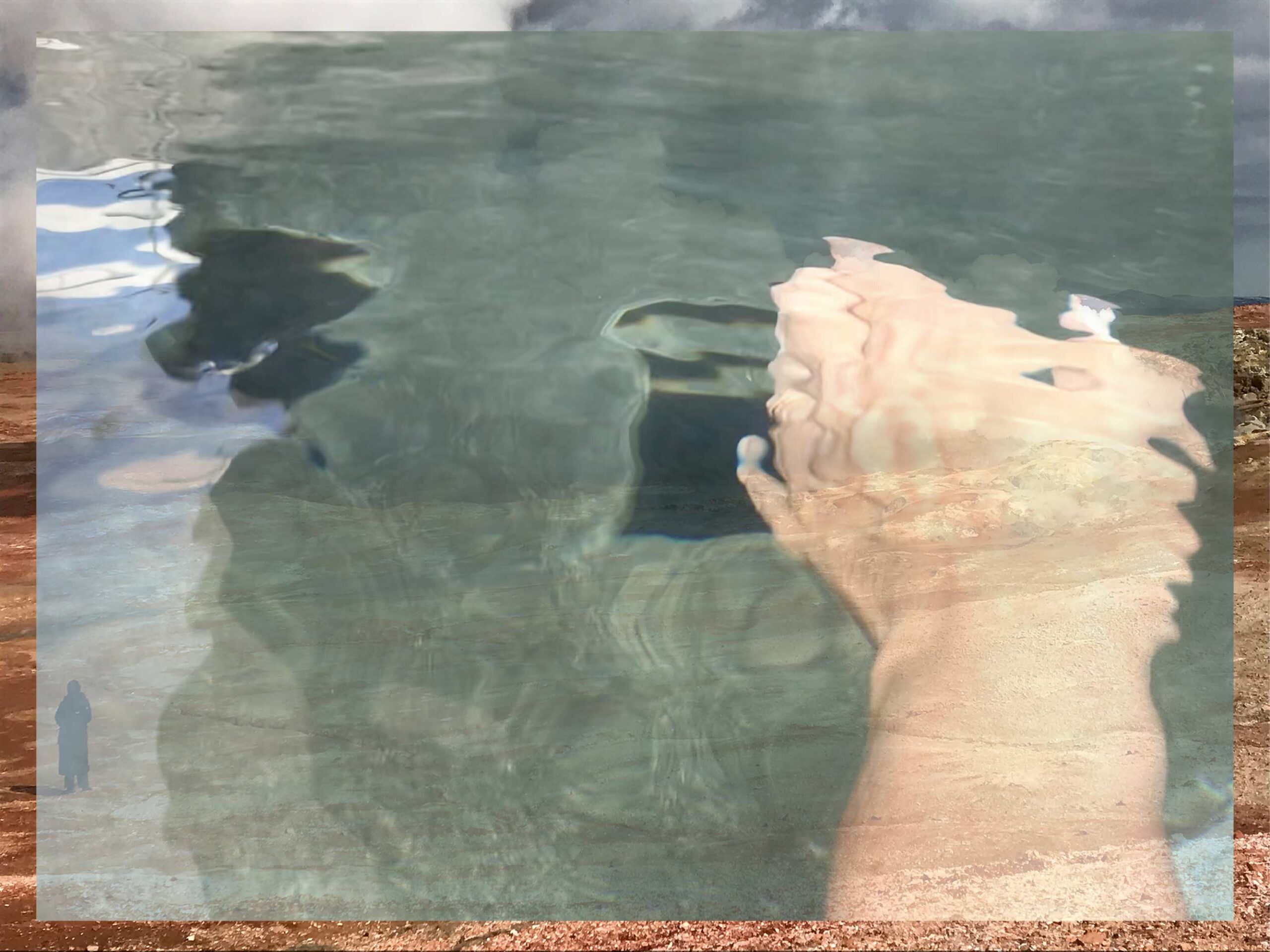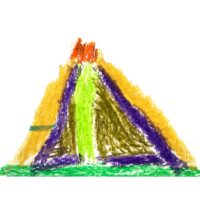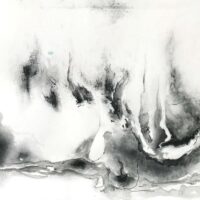Water and intimacy are alike: they bear witness to a way of experiencing the world in which I am no longer just a spectator but a participant. This is a report on a journey to the land of the elements, water, and the inner location of our being.
We need intimacy and inwardness. The world has become so external. Within us, however, takes place the conversation of the soul with itself, which, as Plato describes, makes it possible to begin to speak with others. In intimacy, we enter a silent place where life flows, and we flow with it—in which we swim and let ourselves drift, as in water.
Don’t we all know the need for “the silence of submersion”, for the muteness in which our heartbeat becomes audible? An “inner” inkling knows this question, and a pebble thrown into the pond wishes to trace it. The ringed ripples on the surface ask for softness, trust, and letting go. “Intimus” in Latin is the superlative of “intra,” inside. Intimacy: feeling the current of life deep inside me. Water is an image of this life. What then would water consciousness be, or water trust?
This essay attempts to explore this element and the spheres in which the watery happens to us. In the river of life and beyond the shore, there is no right or wrong, just breathing, pulsating, flowing, transforming. This is also the reason for my research trip to Iceland, the land of the elements. In my luggage, I carry a book by the German philosopher Peter Trawny, with the mysterious title Ins Wasser geschrieben – philosophische Versuche über Intimität (Written in Water – Philosophical Essays on Intimacy). In it, he seeks “the innermost,” the intimacy in his story, in his availability and unavailability. From the very beginning, he definitively identifies intimacy as a water being. “When am I completely with myself? When completely with you? With us? When I turn away from that which does not let me come to myself, that which withdraws me from myself, wrests me from myself, robs me from you. I am with you when I am with myself. I am with myself when I am with you.”1
In the Edda, there are two kingdoms at the beginning of the world: Niflheim, the cold land of ice and mist—not yet running water—and Muspelheim, the land of fire, which is too hot for life. The beginning of the story is born from these two.
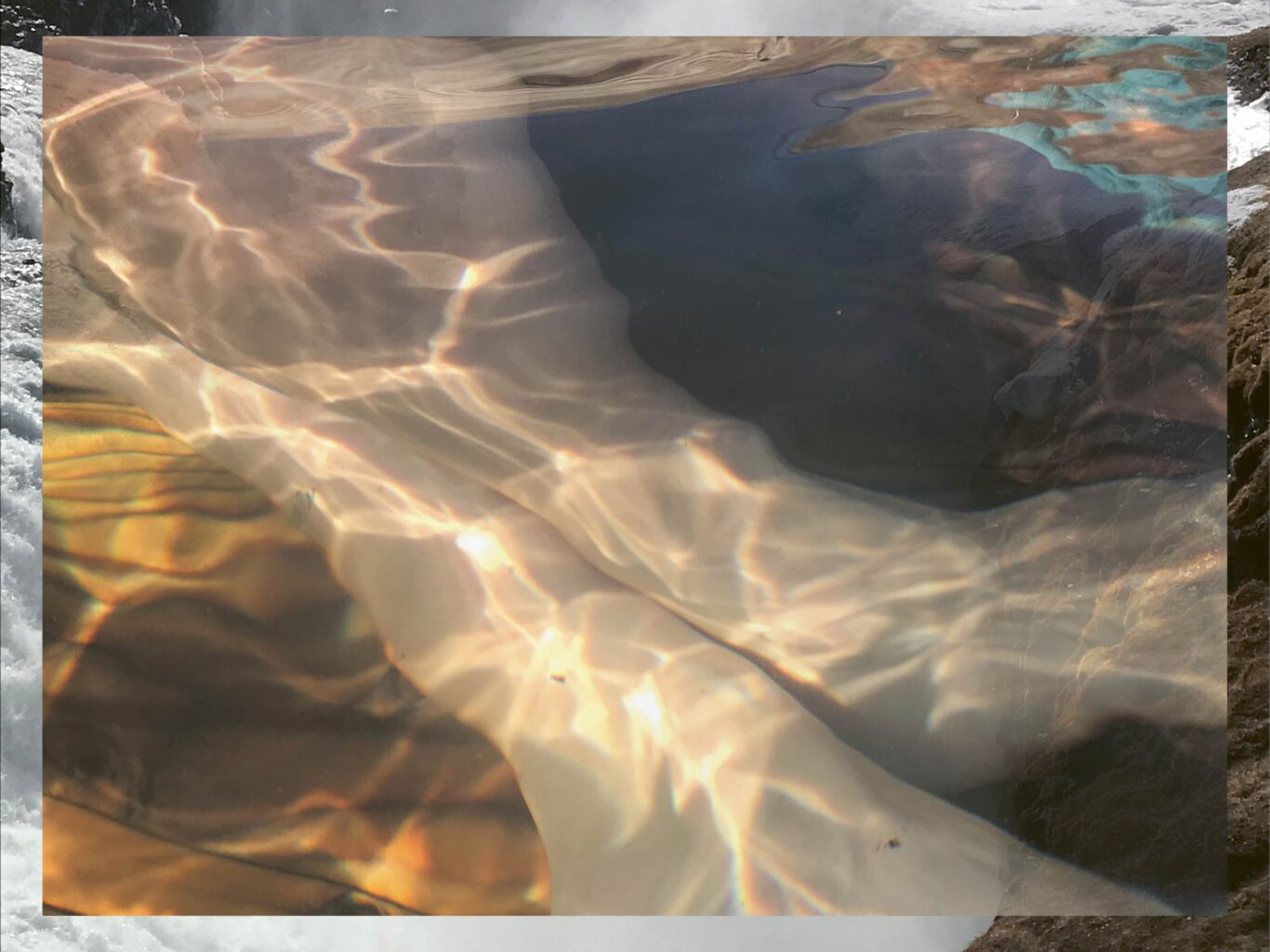
Dancing
To tell you about water is to turn myself into water. As far as I am capable of that, this story can be objective for now. Water does not like to be pressed into molds: it is part of cycles. Nor do we leave any visible traces in water. The first step into water: dancing. In the proximity of fog, in the concealment of haze, the body dares to play with the mobility of its soul and muscles. Although still a little under the sway of gravity, I can already feel my “water body,” supple and surrendering to that which will be. The hard outline of a stiff hip is drawn into softness. Lower currents are washed upwards. Our “water body”, to which the soul belongs, begins in movement.
The soul gradually dissolves its fixed gestures and reaction patterns. Something is released, flows away, and reconnects. The gate to intimacy, to what I feel in and about myself, is opened. “There is an intimate well-being in water, a voluptuousness in the touch of water”2. In water, inside and outside become blurred. In the summer lake, I feel the water on me and in me at the same time. I feel it as an inward touch, just as in dancing the outside (body) and the inside (soul with music) embrace and imprint themselves upon each other in constant mutual transformation. I am part of the giggling flow of a brook or the loud rush of a river. Suppleness and softness reveal themselves through water. Feeling my way in, it is still somehow physical and tangible, but different from the “haptics of the earth” and “heavenly encounters.”
Floating above the world is impossible in this softness—even to create clouds, we would have to want to touch, grasp, and become touchable. Here, softness does not exclude clarity. The Icelandic word “auðmjúk” means “rich in softness,” and it also means “modesty” or “humility,” like a soft, clear, tactile gaze.
Softness of the soul, the inner side of the “water body” experience, is about letting go. There is no need to control any longer. Things can remain open. “Agi” (pronounced aye) means something like “discipline” in Icelandic, but without the strictness that is associated with it in German. “Agi” actually comes close to the rhythmical. In terms of discipline, the “rules” that must be followed tend to be natural: they are followed out of a sense of the rightness of their rhythm. When two people sleep together in Iceland—a profoundly intimate affair—they don’t use the verb “to sleep” but “to live.” Two people “live” together in physical twosomeness. In what currents do we move when we live, alone or with each other? If we surrender to the watery with trust, like music, like dance, we are supported and moved. And yet, we are also a moving force. Maybe, for now, it is a matter of finding our rhythm in the movements of life.

In Warm Springs
“Intimacy creates a unity, a oneness, in and with the world, in which the differences always become fluid.”3 According to French philosopher George Bataille, we share this condition with animals.4 The animal is in the world like water in water, he says. Can we imagine that? Do we know this from experience? And what does that mean for our consciousness? Iceland’s hot springs bring us closer to this feeling. If you spend at least two hours daily in 40-degree Celsius water, everything relaxes. Warmly rinsed to softness in the icy clarity of the air, slowness becomes natural again, as does listening. With my ears underwater, I drift along, sink a little, add my movement, go under again, glide, and feel like a pond dolphin. I hear the same thing I heard as a child when someone held a shell to my ear: I hear my blood, my water rushing. Just sitting in the pool is hard for me. At least one part of my body is always in motion, bobbing with the waves. My palms sculpt as they move back and forth in the water’s gentle resistance, swirling, stroking, and penetrating, but without a “dissecting cognitive force.” It is more like feeling my way through. The stigmata, our palms, seem to me like organs of intimacy, even if it is air or stone that they feel. My hands contain the nestling capacity of water, its ability to feel and fit into every form, from inside and outside.
In intimacy, I am both in a place and action. It is a space “in which boundaries only exist in the transition to boundlessness, finitude only at the edge of infinity, and difference only in indifference. For water in water is an ‘in-being’ determined by an impossible boundary.”5 It is as if my “watery” intimacy, and that of other beings, could experience itself uniquely through water. We are one, without losing ourselves, and can perceive ourselves as collective individuals—a fact that is felt rather than known. “We feel while we live, but do we feel life?”6
After ten days in hot pots, thermal baths, and warm mountain rivers, my muscles are so warmed through that everything has come to rest. There is no drama, just elementary being and seeing what my inner perception has become. There is something in myself that I liken to “feminine weaving.” I have been bathed. All of us “experienced” this in the warm cocoon of our mothers. Amniotic fluid is 37.5 degrees, and our earthly life begins with us floating as one within another. In this, “[…] self-knowledge is not knowing, rather it is a consummation of the self, an experience of intimacy.”7 When the fire unleashes its power and melts the ice of Niflheim, something can develop in the warm water. Our inner being is made of these same elemental forces. There is no passing away in the flow of coming into being: I bring something forth, but the question of how it will go, grow, and be is no longer my concern alone. I can only trust that, just as I was trusted and trusting when I began to incarnate into water.
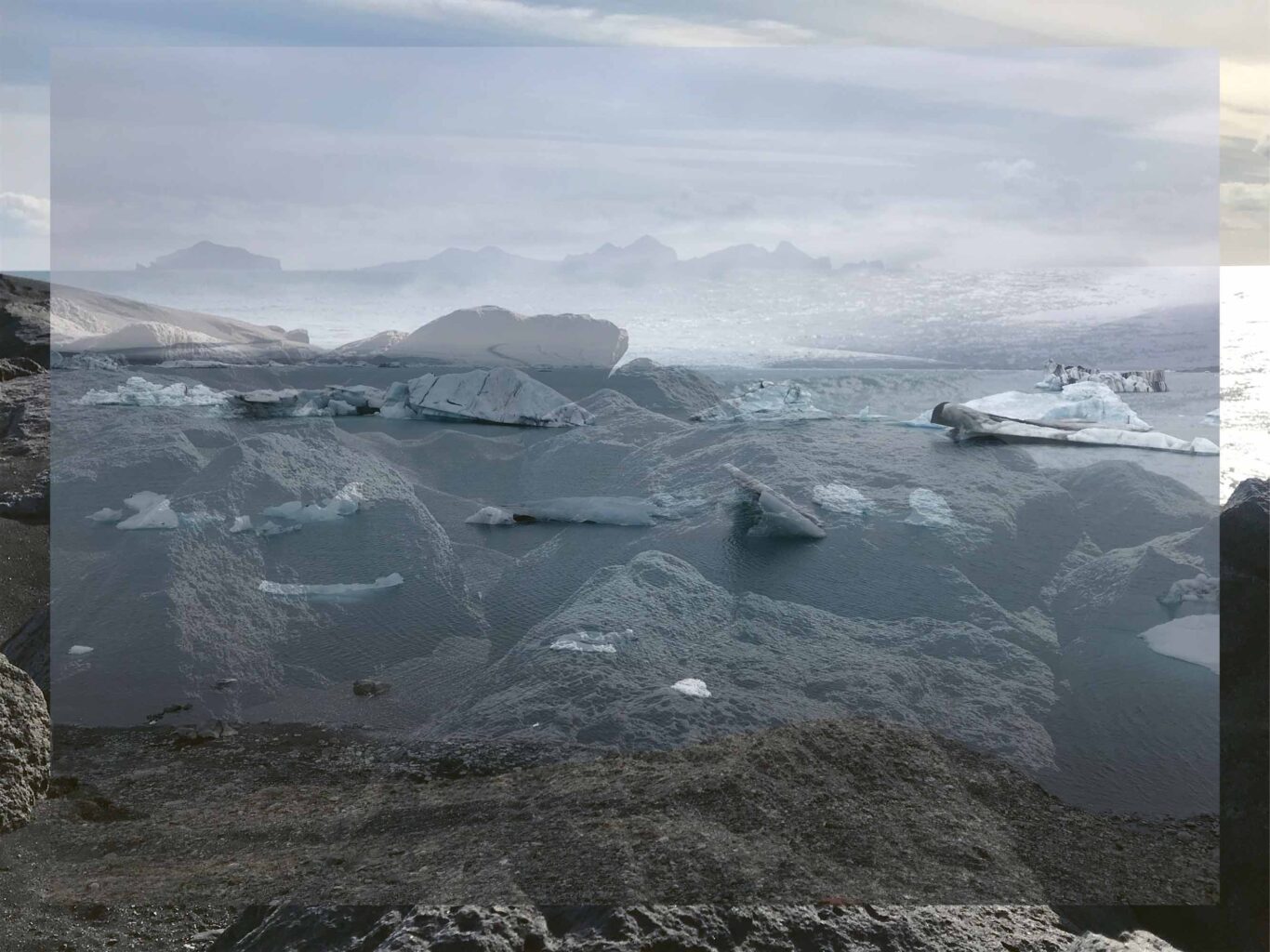
From the Springs of the Heart
If you listen to someone’s heart with a stethoscope, there is an initial silence. It is like preparatory listening, as if you must first get down to the source. And then you hear it as if for the first time: deep inside, it pulsates, hidden. It sounds different for every person. In some, small and fast, almost nervous; in others, like a big truck; in some, it seems to form vaults into which we could enter. But what they all have in common is the noise of the submerged depths. It is like the roar of a waterfall, which the microphone cannot record because we don’t hear it with our ears anymore but with our bodies. The heartbeat of the waterfall is a dark rumbling. It reflects a mightiness that can thwart our control and destroy reality. A faculty, a creative power, lives in the heartbeat, at the source of the headwaters. All elements can destroy because they build and shape the world. And the masses of water plunging into the dark abyss reveal this original creative power to me.
It also exists in humans, more gently, softened. It comes from the wellspring of the heart. I dream at and in my very own spring. “There is always a place where I am free. That is the beginning of intimacy.”8 It makes the bond with myself, with my responsibility. It is not filled with dogmas—dogmas and demands cannot harm it. Its kinship with water prohibits just that because there are no fixed forms in water. Even the glacier, a child of water, is congealed movement that can never stand still for long. The ice breaks away at its edges and drifts silently on a lake, like clouds on the water, as water in water, and eventually becomes drops of water, crystalline sounds in the solitude of the stone debris. It is the birth into temporality, into circulation, the birth of transformation. It lies “beyond passion”: a dissolving and creating elemental force that tears at the limbs and makes all emotion seem ridiculous. Is intimacy also such a force, an elemental power, which, as a motive of substance, still contains the drive to formation within itself? The “architect of life” has only just begun to play. Are essence and matter still together there? Trawny’s thesis: The human being only appeared when intimacy appeared.
I slowly realized that no moment of arrival must be reached. There is only transformation. I am born into the cycle and wander through myself and the world. The single “one” I have to become does not exist. I am many and many things. The wellspring of the heart constantly rinses away the narratives we write and have written about ourselves. But a grotto filled with warm water, or a spring at the bottom of a valley, is a listening organ, a receiver for ideas from the earth itself. It is all very cryptic and yet very real. Water consciousness, “intimacy is cryptic […], it is to be communicated where it is shared.”9
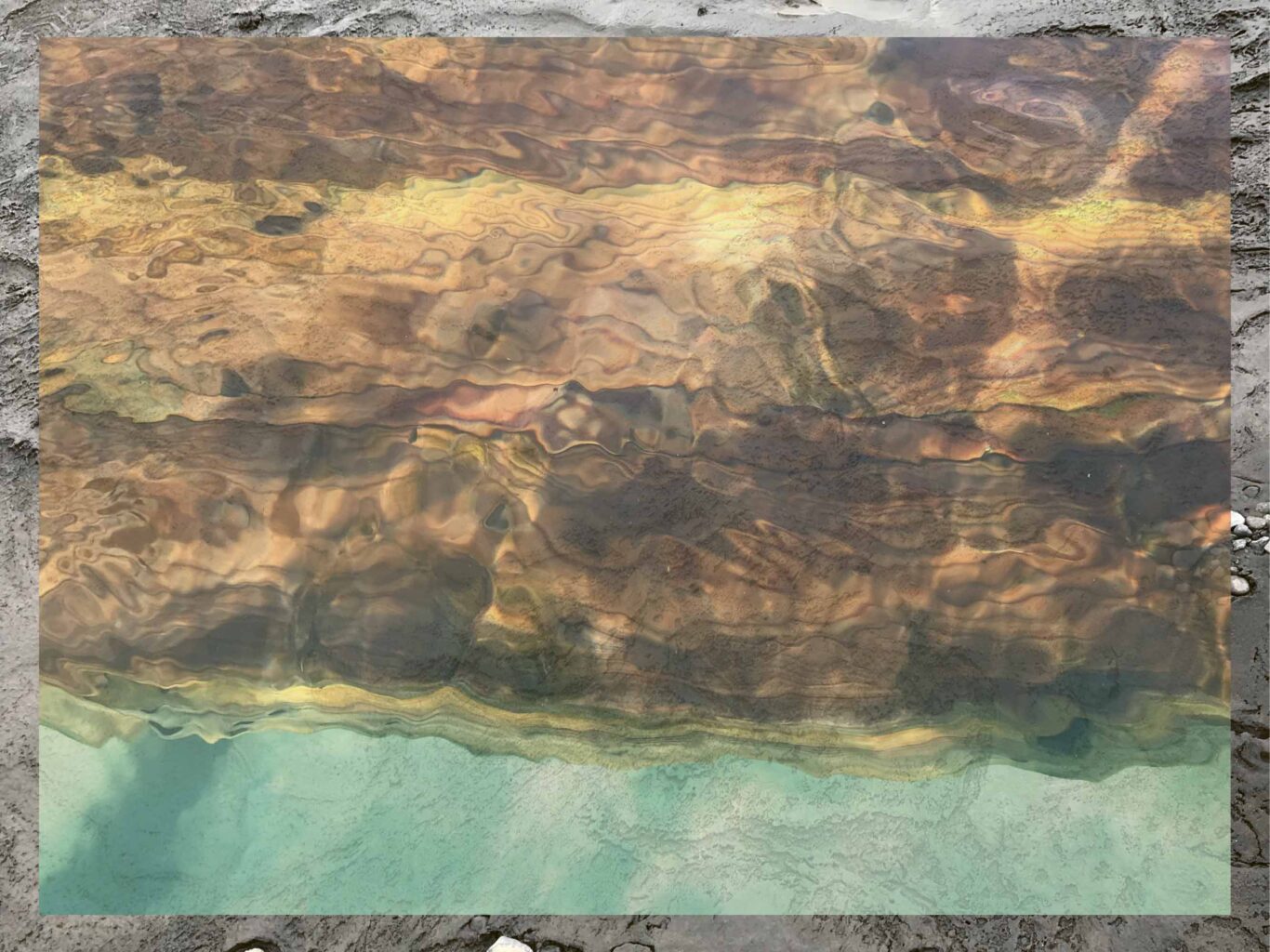
Water in Play
The veils of water in Reykjadalur, in the “valley of steam” in front of the mountain illuminated by evening light, are delicate in the vast landscape. They look like they are performing eurythmy. Enveloping gestures play with the wind and fade to single droplets at their edges—water dances along the earth’s warmth. At the geyser, they tussle and breathe together, and a discharge of water erupts every few minutes. The earth is a living being. Each element unfolds its unique powers and beauties through the interplay with other elements. It is beauty that knows nothing about itself and does not talk about itself—unnamed, wholly consummated. And it creates life. Forms are born, and elements are formed.
If rain had a color, it would be that of the moss on the lava fields of Iceland. The golden-haired grass of I don’t know which goddess has spread out on the flat expanses, preparing a first encampment. The sky’s blue is reflected in the ice puddles of the plateaus. On the threshold of color, a steel grey with violet stripes the rocky slope, no separation yet between essence and color—between colors from the fire, the interior, and colors from the light, the air. Water, however, gives a sense of time to the Icelandic landscape, for it moves in this silent desert expanse—in streams, waterfalls, rivers, vapors, in interplay with fire, wind, and stone—a happening, an event. Stepping stones can help us not perish in the flow of time, yet I need a “water body” to swim in the river of life. (Just as I need an earth body to live on the planet, and just as I have a “skin of light” that protects me from too much shadow.)
Intimacy unfolds in this wholeness “like my very own element around me. […] Water is not an element localized in a landscape but the stream of life itself, which flows only in the most inward. Water: element of an inner topography.”10

Intimate Gaze
The gaze in the Icelandic expanse is a roving one. It probes the whole periphery and oscillates inside and outside, like intimacy. It remains in motion, just like water or the probing palms of my hand. It brings the whole together and makes it resound. This is undoubtedly easier here because the gaze is not obscured by lush flora and thus is relegated to the small scale. And even though Snaefellsjökyll, the entrance to the center of the earth, is covered in clouds today, it feels as if lava is the spiritual fluid from which the world is built—and water provides an abode for this “primordial spirit matter” and gently begins to shape it.
Etymologically, “matter” comes from the Latin words “mater” (mother) and “matrix” (womb). At this moment, I can only feel the thoughts that are set in motion but not yet put them into words. It reminds me of a telling quotation from Rudolf Steiner’s autobiography: “I sought […] to set out that it is not something unknown that lies behind the sensory world, but the spiritual world that lies within it. And of the human world of ideas, I sought to show that it has its existence in this spiritual world. The essence of the sensory world is therefore only hidden from human consciousness for as long as the soul only perceives through the senses. When ideas are experienced in addition to sense perceptions, then the sensory world is experienced by the consciousness in its objective essentiality. Cognition is not a representation of an essence, but the soul living its way into this essence. The progression from the still non-essential world of the senses to the essential nature of the same takes place within consciousness. Thus, the sensory world is only an appearance (phenomenon) for as long as the consciousness has not yet come to terms with it. In truth, the sensory world is the spiritual world; and the soul lives together with this recognized spiritual world by extending its consciousness over it. The goal of the cognitive process is the conscious experience of the spiritual world, in the sight of which everything dissolves into spirit.”11
Sensibility finds its way into the essence. The soul lives in the essence: it probes, touches, moves and comprehends. That is feeling cognition. Intimacy is soul life which comes to perception. It is like a poetic life between concreteness and the spirit world in lovingly felt contemplation—an expression of the feeling that perceives itself and sees and experiences itself through itself. It does not will with the superficial volition of the personality in the here and now but moves in the in-between space—the dissolved, loosened boundaries of my “self”—towards my floating etheric being which perceives itself in the human being as spirit-self.

Humans in the Water
We could call trusting in the flow of life “staying in the water.” Everyday affairs proclaim that there is no “water body”: what counts is the beat rather than the rhythm. The media, the entire realm of representations, seeks to make us believe that we should identify ourselves through pseudo-beauty, knowledge, production of works, titles, skills, and abilities. I suppose that is one level of being. And yet, there is more—we can all feel it and feel it most clearly when it hurts. Taking something internal outward means making ourselves vulnerable. Human beings themselves are the vulnerability of the world. Realizing my softness, not taking it as something bad, something useless, something small, is the inversion of a narrative and a new space of possibilities. “To feel, we have to be open to pain. Such openness to pain is at the same time the possibility of intimacy.”12
Perhaps, in the Western world today, this is not yet in demand, but it seems that in the future, we could make good use of it: to come close to each other in our essence, to become “tactile” with each other, to really know each other (not in the sense of a body of knowledge) in everything suitable to be touched. When I am in the water intimately, I cannot be lost, nor can I be in you. It merely means letting go of what has constituted me until now, what I thought identified me, including this attempt to write about water. Tomorrow, I will already be someone else; I would write something different. But for today, this is true. And like a little stone thrown into the pond whose ripples want to augment others, many raindrops on the surface create an interplay.
The epitaph of the poet John Keats, who died young, reads, “Here lies One Whose Name was writ in Water.”13 But these words were not written in water but in stone. Water breaks on stone. In other words, we can only do it here on Earth.
Translation Christian von Arnim
Photos Gilda Bartel, composition: Fabian Roschka
Footnotes
- Peter Trawny, Ins Wasser geschrieben – philosophische Versuche über Intimität. Matthes&Seitz, (Written in Water – Philosophical Essays on Intimacy). Berlin 2013, p. 7.
- Ibid, quoting Novalis, p. 14.
- Ibid, p. 31.
- George Bataille, Theory of Religion. Princeton University Press, Princeton 1992.
- Trawny, p. 31.
- Ibid, p. 102.
- Ibid, p. 138.
- Ibid, p. 26.
- Ibid, p. 83.
- Ibid, p. 58, p. 86.
- Rudolf Steiner, Autobiography: Chapters in the Course of My Life. GA 28, p. 263.
- Trawny, p. 138.
- Ibid, p. 142.

